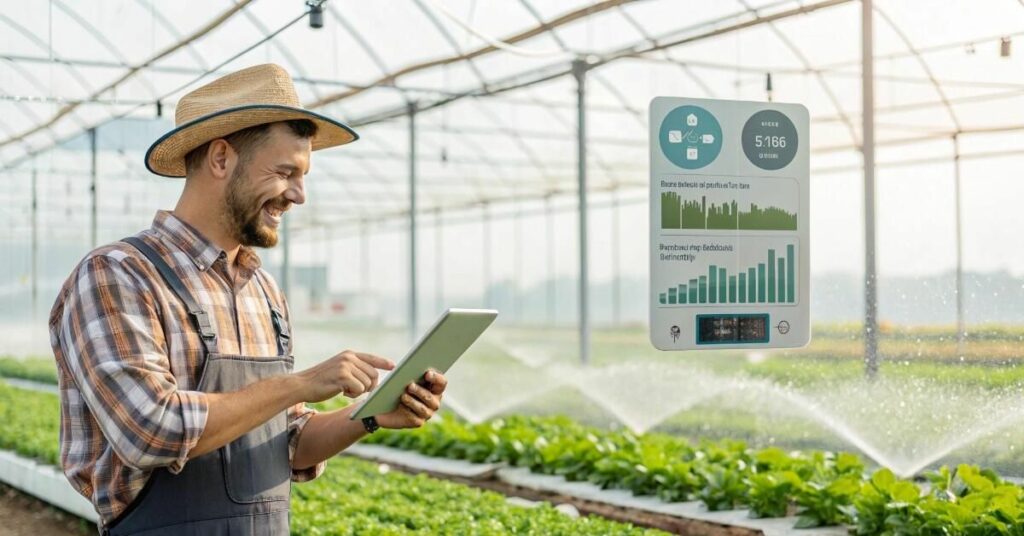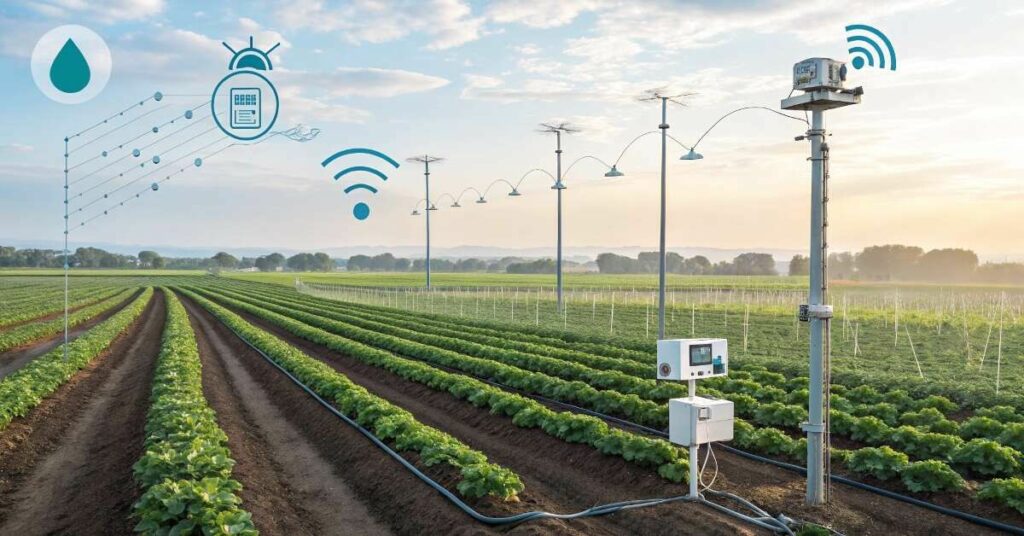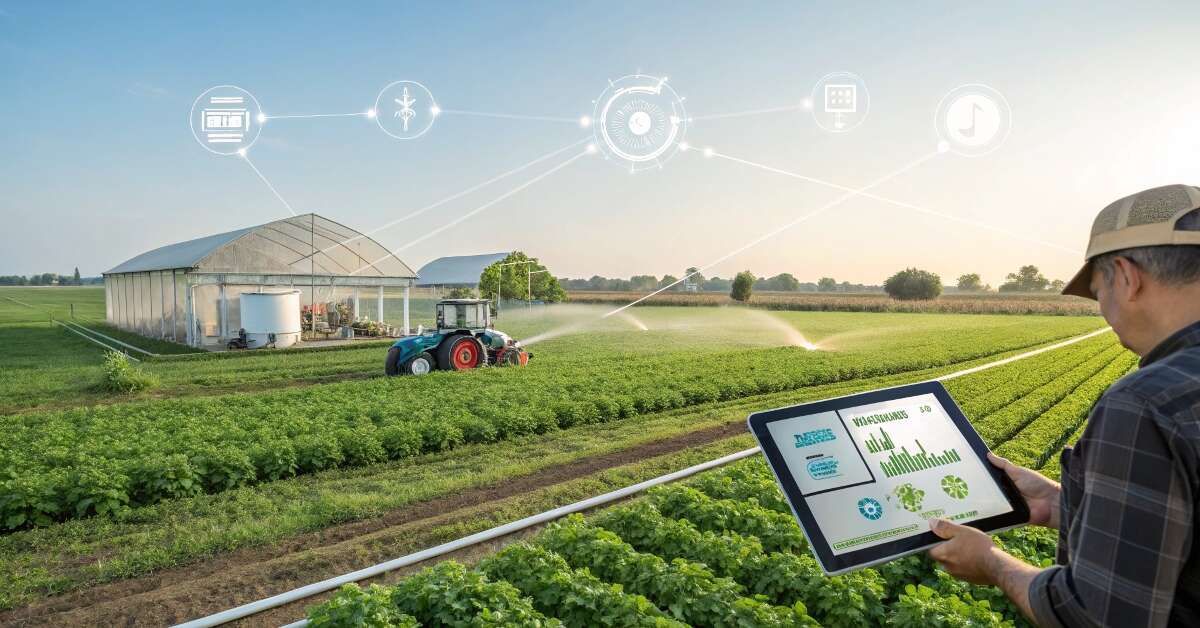Agricultural Automation Using PLCs is changing the way we farm. I believe this is one of the best strategies being used in modern farming. Automation on farms allows operations to be carried out more efficiently, accurately and quickly.
Eliminating manual labor in farming brings tremendous benefits to farmers. Automated systems are capable of performing repetitive jobs such as watering, feeding, and sorting crops. As a result, labor costs are reduced and mistakes are minimized.
Thanks to reliable automation, I think productivity is going through the roof. When everything is done on time, crops are better. Equipment maintains its effectiveness for a longer period of time. As a result, farmers are able to accomplish more with less workload.
Understanding PLCs in Agriculture

Programmable Logic Controllers (PLCs) control the functions of automated systems. As far as I’m concerned, they’re essential for the advent of smart agriculture. Sensors detect changes immediately and react accordingly. They keep track of variables such as temperature, humidity and illumination. Then, they send signals to machines to act at just the right time.
PLCs are ideal for managing jobs such as watering, planting and reaping. They carry out their tasks reliably and consistently. PLCs are capable of responding to when the soil needs watering and can release seeds in specific amounts. Gathering crops is now simpler and more precise. PLCs help speed up, clean up and improve the efficiency of farming.
Key Benefits of PLC-Controlled Farming
To me, the real value of PLCs is their ability to ensure precision in all farm operations. Their goal is to ensure that every task is completed at the right time. Every step is done just right, without wasting any resources. I believe achieving this degree of precision results in healthier plants and bigger yields. A higher level of precision leads to a higher yield, and that’s a major accomplishment.
Another big advantage of PLCs is that they allow us to save money. Farms can cut down on costs significantly by minimizing errors and conserving energy. Proper use of equipment ensures it lasts longer.
There are several advantages to using PLCs.
- Less waste from overwatering or overfeeding
- Lower labor costs with fewer manual tasks
- Better use of fuel and electricity
- Fewer mistakes during planting or harvesting
- Longer equipment life with smarter control
Common Applications in Agricultural Settings

A PLC takes care of numerous routine operations on the farm. I think they revolutionize the way farms operate in greenhouses. They manage the environment to suit the needs of the plants. Fertilizer is applied at the right time and in the right amount. Automation reduces the work required while improving the quality of plant growth.
Another big advantage is timing. Feeding animals and watering crops must happen on a steady schedule. PLCs guarantee that every cycle is completed in the proper sequence. The result is the flourishing of crops and animals.
Some typical applications of the strategy are listed below.
| Task | PLC Function |
| Greenhouse climate | Regulates temperature and ventilation |
| Fertilization | Delivers nutrients at set intervals |
| Crop watering | Activates irrigation based on moisture |
| Livestock feeding | Controls feed delivery schedule |
| Lighting systems | Adjusts light levels for plant growth |
Integrating Sensors and Smart Devices

Smart sensors continuously monitor the field around the clock. They serve as the eyes and ears of modern agriculture. They continuously monitor soil moisture, light levels and temperature. I believe this continuous stream of data allows everything to run so efficiently.
With this data, PLCs can react right away. Rather than guessing, they know exactly what to do. We make all our decisions about irrigation and lighting based on solid data. This approach of making decisions helps produce healthier crops and reduces waste.
Challenges and Considerations
Financial expenses seem to be the biggest barrier. Purchasing the equipment necessary for PLC systems may seem too expensive for small farms. Buying sensors, controllers, and automation tools is out of reach for many. I believe this presents a significant barrier to growth for resource-constrained farms.
Training is essential as well. PLCs require somebody to program them and look after them regularly. I believe that farmers lacking the necessary expertise could encounter problems with their PLCs. That’s why getting to know the technology is just as crucial as getting it set up.
The Future of Farming with PLCs
In my opinion, the future looks bright. The combination of AI and IoT will make PLC systems more intelligent. They’ll predict changes, adjust faster, and learn from every action. I feel this kind of technology will help farmers stay ahead, no matter the conditions.
I’m most intrigued by how these new tools can be scaled up to suit farms of all sizes. Tools are now being created that are suitable for farms of all shapes and sizes. Small-scale farmers will be able to benefit from advanced automation at an affordable cost. I believe this shift in technology will transform farming across the board, making it more efficient, equitable and able to keep up with the demands of tomorrow.
FAQ’s
What is Agricultural Automation Using PLCs?
This involves using programmable logic controllers to automate the execution of different farming processes, increasing productivity and crop output.
Which farming processes can PLCs automate?
PLCs have the ability to control irrigation, seeding, fertilization, greenhouse climate and also manage animal feeding systems.
Are PLC systems suitable for small farms?
Scalable solutions are now within reach of farms of all sizes despite their higher upfront investments.
Conclusion
Using PLCs in farming is definitely a smart decision. They make it easy to perform jobs more efficiently and accurately. The process from sowing to reaping goes much more efficiently. Introducing PLCs into farming gives farmers greater control and results in more efficient and less stressful operations.
I believe that in the future, automation will continue to improve. Advancements in technology will encourage more and more farms to adopt automation. Automation helps us create a more resilient and sustainable foundation for agriculture.

